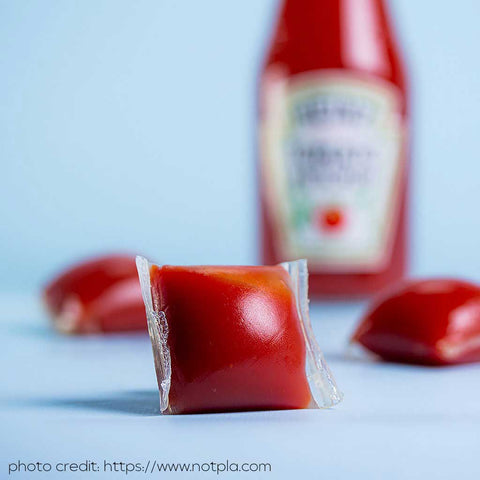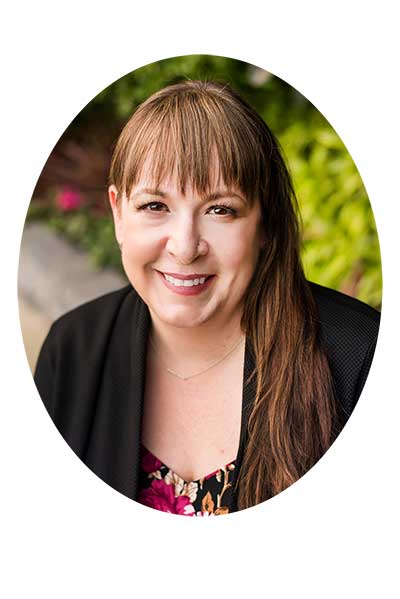Changemaking: Innovative Plastic Alternatives
Plastic alternatives are the way of the future. Sustainable materials and new packaging options are constantly in development by scientists and innovators.
Novel materials design is a rapidly growing field in science and engineering. As a result, eco-friendly packaging materials that are sustainable and biodegradable are in high demand, and becoming more available.
Searching for and finding innovative technology and innovative solutions can be challenging for small brands. However, the rewards for using plastic free skincare packaging are high for producers and consumers.
Circular Economy
When it comes to alternatives to plastic packaging and replacing single-use plastics, a key feature needs to be circularity. The circular economy is a sustainability principle. The linear economy consists of a pathway where we take from the earth, make products, and throw them away as waste. In contrast, a circular economy involves eliminating waste in the first place. There is a focus on renewability and regeneration, and there are always more ways to optimize and improve. Replacing plastic products and plastic waste is one priority in a circular economy. Recycling isn't always the solution, though it helps.

Anyone who has started a business will know that scale is one of the most challenging barriers to overcome. These difficulties are experienced by both the companies that manufacture and the ones that use these exciting new materials and technologies.
Corporations vs the Little Guy
Here’s an example:
A company invents a fantastic new material. It’s fully biodegradable and can be composted in your garden. It can be moulded into various shapes, including cosmetics jars. The company is just getting started, and the cost of making this new material is very high because there isn’t much demand yet. They are currently funding themselves with money from their own pockets, so are operating at a loss. Making small batches is impossible, and the only viable option to possibly profit is to target a large corporation and hope to land a massive account.
A small, indie startup beauty brand wants to put their face cream into a jar like the one manufactured above. They’ve also just started and are funding their brand out of pocket. A cheap plastic cream jar is $0.20 when ordered in batches of 1000 from overseas. The container above costs $2.25 each and must be purchased in batches of a minimum 25 000 containers.
So how do these two companies ever match up and work together? How do innovative startups become successful?
The sad fact is that many don’t.
Having innovative technology go mainstream requires major investment funding. Eventually, these types of technologies become more affordable and more widely available. It also stimulates competition and even more innovation.
This is a top down approach.
Major corporations can drive these changes if they are willing to adjust their bottom line. Here’s an example that highlights a model for the numbers:
If a fast-food chain uses 1 billion plastic straws/year that cost $0.001 each, they have a plastic straw budget of 1 million dollars. Suppose someone invents a 100% biodegradable replacement straw that costs $0.015 each. In that case, the giant corporation needs to increase its straw budget to 15 million. Could they do it? Probably. But will they? The big guys always have a competitive advantage to determine market priorities.
A bottom-up approach involves consumers choosing brands to support the little guy. New brands have the opportunity to build decisions like material choices into their pricing and business model right from day 1. Choosing the more expensive plastic straw at the beginning means profit margins will be lower at first. Still, they’ll eventually get better as your order size increases and as the material becomes more affordable.
What startup indie brands need are intelligent consumers who understand that change-making takes time.
Disruptive innovation requires patience.
Types of Packaging Materials
When it comes to sustainable materials that biodegrade, bamboo and cardboard are not the only options. Nor are they always good options.
Ever drink out of a soggy cardboard straw? Try throwing a lip balm into your purse when it’s packaged in a cardboard tube?
Some of these materials break down way too fast to be helpful on a large scale. They’re great for home-crafters, but if you want to make a few million lip balms, you don’t want your containers to get mushy and start biodegrading after a few months or one hot day.
Innovators who work to design plastic alternatives, by nature, are intensely interested in saving the environment. This means that they tend to consider all aspects of circularity when working on their material design and engineering. The innovation process requires out of the box thinking at all levels.
Advocacy
New materials often have considerations for their disposal that might not be mainstream yet. Some newer recyclable materials aren’t widespread or recognizable enough for recycling stations to accept them.
Many cities don't have industrial composing programs. These facts don’t mean the new technologies aren’t worth using, just that our global society has a lot of work to do to support the innovators and make these changes ultimately successful.
Advocacy is needed. Industrial composting is set to have mandatory availability in Europe by 2023. Yet, the Canadian city I live in just got curbside recycling - the disparities between Europe and North America are staggering.
We have to push our municipalities and governments to do more.
Material Design and Innovation: Keep your eye on these innovators!
As an anti-plastic skincare brand, we are committed to incorporating as many of these types of technology into our product packaging and design as possible - especially as we grow and our purchasing power changes over time. These links are non-solicited, non-affiliate.
Sulapac

Sulapac® is a sustainable alternative to conventional plastic. Sulapac® is a biocomposite material that is industrially compostable (EN 13432). The main components of Sulapac are wood and plant-based binders. From the standpoint of circularity, much of the raw material is sourced from the wood industry’s processing side-stream. If Sulapac materials end up in the natural environment, they fully biodegrade without leaving any permanent microplastics behind. Depending on the thickness and the type of material, this would occur on a similar timeline as plant materials like wood chips or fallen leaves.
Cove
Cove uses PHA (polyhydroxyalkanoate) to produce a sustainable alternative to plastic bottles. Their bottles (including the caps) are made from PHA. This biopolymer fully biodegrades in nature, including marine water, on a timeline of about 5 years or less. That's still no excuse to throw litter anywhere, but if it does reach the ocean, it won't persist for 500+ years and it won't turn into harmful microplastics.
Teal
Teal also uses PHA to produce a sustainable alternative to plastic cosmetic containers, and jars. Their innovative skincare packaging targets the hotel industry because of the volume of single-use plastics consumed daily in the form of shampoo bottles.
Tipa Corp
Tipa has created compostable films and laminates with comparable properties and functions to conventional plastics. TIPA’s patent-protected formulae are made from a blend of fully compostable polymers, and are what give TIPA® films and laminates similar properties to conventional plastic. Because of this, TIPA® demonstrates excellent optical, mechanical, and barrier properties such as high transparency, printability, high sealing strength, high impact and high barrier.
Biolo
Another company using PHA as a sustainable alternative to single use plastics, Biolo has created a fully biodegradable straw. Unlike soggy cardboard, these straws look and feel like traditional plastic. They are home compostable and will disappear entirely within about 120 days. Biolo materials are also used to produce alternatives to single use plastic bags.
Notpla

Notpla has a fantastic innovation called Ooho that functions as an edible packaging material. This is made from seaweed and is just super-cool. They’ve begun a partnership with Heinz Ketchup. We think this is just a perfect example of a big corporation working to help move novel materials forward. If there’s ever a cosmetics option for something like this from a refill standpoint, we’ll be on it!!
Packaging Made From Mushrooms/Fungi
Two brands making innovative packaging materials from mycelium (mushroom) are below. This technology is really neat because you can create a customized replacement for styrofoam and other packaging materials. Once your moulds are made, then the growing begins.
What About Greenwashing?
All environmental claims are at risk of being abused. When the material PLA became available, it was broadly touted as being fully biodegradable. While this is true, manufacturers and brands didn't go the extra step of testing it or qualifying the details - full biodegradation can take hundreds of years. While still better than traditional plastic for some reasons, it's not the answer.
Another issue is the need to dig deeper about all materials. You've probably heard that "glass is infinitely recyclable". While true, it's also not true if the glass is coloured or frosted. Even painted glass often gets tossed into the trash heap by the machines that do optical sorting at various recycling depots. So again, glass is better for some reasons, but not so great for others. That's why we've taken a balanced approach to using glass and have intentionally chosen to use plastic in some scenarios where it's the better option.
There is no perfect solution. Everything has pluses and minuses.
The only way we are going to get out of this climate catastrophe is with innovation, willingness to change, and a reduction in waste production overall.
Dr. Heather Smith developed her love for skinimalism and clean beauty years ago when she began making home remedies for her newborn's eczema. She is an expert in natural ingredients and active botanicals and has now launched bareLUXE Skincare - a full line of effective oil serums. She dedicates this blog to consumers who are researching ingredients and working to make their beauty ritual more natural and sustainable.

MEDICAL DISCLAIMER
This content is for informational and educational purposes only. It is not intended to provide medical advice or to take the place of such advice or treatment from a personal physician. All readers/viewers of this content are advised to consult their doctors or qualified health professionals regarding specific health questions. Neither Dr. Smith nor the publisher of this content takes responsibility for possible health consequences of any person or persons reading or following the information in this educational content. All viewers of this content should consult their physicians about their skincare concerns and routines.









Leave a comment